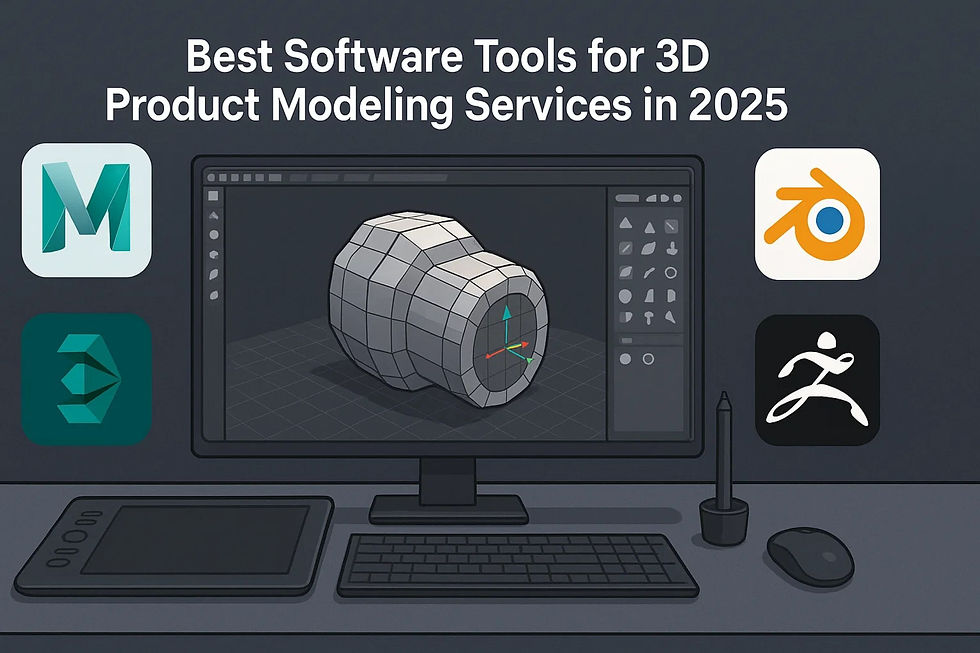Visualizing the Unbuilt: Using 3D Map Illustration for Future Architecture Concepts
- Hemant vizent
- May 16
- 4 min read

Seeing the Skyline of Tomorrow: Using 3D Map Illustration for Future Architecture Concepts
The realm of architecture has always been one of visionaries, individuals capable of conceiving structures and urban landscapes that exist only in the realm of imagination. Traditionally, these nascent ideas were brought to life through intricate drawings, detailed blueprints, and perhaps physical models – tangible representations that offered a glimpse into the unbuilt future. However, a powerful new tool has emerged, offering an even more intuitive and accessible way to visualize these future architectural concepts: 3D Map Illustration. By combining the spatial accuracy of mapping with the artistic flair of illustration in three dimensions, this technology allows architects, urban planners, and the public to see and understand future buildings and cityscapes with unprecedented clarity and engagement.
Beyond the Flat Plan: The Challenge of Visualizing Future Architecture:
Presenting conceptual architectural designs, especially within the context of an existing or future urban environment, has always posed a communication challenge. Flat architectural plans, while essential for technical specifications, often require a trained eye to fully decipher the spatial relationships and the overall impact of a new structure. Even artistic Architecture Illustration in two dimensions, while evocative, can lack the precise spatial context needed to truly understand how a future building will integrate into its surroundings. The need for a visualization method that combines spatial accuracy with intuitive three-dimensional representation has become increasingly critical in conveying the potential of unbuilt architectural concepts.
Mapping the Future in Three Dimensions: The Power of 3D Map Illustration:
Unlike traditional maps that depict existing structures and terrain in a flat format, 3D Map Illustration brings the landscape to life with realistic topography, this allows viewers to see not just the footprint of a new building, but its height, massing, relationship to its neighbors, and its overall impact on the skyline and surrounding urban fabric.
The Precision of 3D Vector Maps: Building a Scalable Foundation:
The foundation of effective 3D Map Illustration often lies in the accuracy and scalability of 3D Vector Maps. Unlike raster-based maps that can become pixelated upon zooming, vector maps are built using mathematical equations that define lines, shapes, and points. This allows for infinite scalability without loss of detail, making them ideal for creating detailed urban models. When future architectural designs, often created using sophisticated Architectural 3D Modeling software, are overlaid onto these precise 3D Vector Maps, the resulting 3D Map Illustration is both visually rich and spatially accurate. This combination ensures that the visualization is not only aesthetically pleasing but also grounded in real-world geographical data.
Bringing Concepts to Life: The Role of Architecture Illustration in 3D:
While 3D Vector Maps provide an accurate spatial framework, the artistic skill of Architecture Illustration is crucial in bringing future architectural concepts to life within the 3D environment. This involves more than simply placing a generic building model onto a map. Skilled artists use lighting, textures, and rendering techniques to create visually compelling representations that highlight the design intent, materiality, and overall aesthetic of the proposed architecture. They can also incorporate elements like landscaping, pedestrian movement, and even atmospheric conditions to create a more immersive and believable vision of the future.
Visualizing Urban Transformation: Planning for Tomorrow's Cityscapes:
3D Map Illustration is an invaluable tool for urban planners seeking to visualize the impact of future developments on existing cityscapes. By creating detailed 3D models of proposed buildings and infrastructure projects and integrating them into a georeferenced 3D Vector Map of the city, planners can assess the visual impact on the skyline, analyze potential shadow studies, and evaluate the integration of new structures with the existing urban fabric. This allows for more informed decision-making and facilitates clearer communication with stakeholders and the public about the future of their city.
Engaging the Public: Making Future Architecture Accessible:
One of the most significant benefits of 3D Map Illustration is its ability to make future architectural concepts accessible and understandable to a wider audience. Unlike complex blueprints or technical drawings, a well-crafted 3D illustration can convey the essence of a proposed design in a way that is intuitive and engaging for non-architects. This can be particularly valuable in public consultations, allowing citizens to visualize and provide feedback on future developments in their communities. The clarity offered by 3D Map Illustration fosters more informed and productive discussions about the future of the built environment.
Marketing the Unbuilt: Creating Excitement and Investment:
For developers and architects, 3D Map Illustration serves as a powerful marketing tool for showcasing future projects to potential investors and buyers. By creating compelling visual narratives of unbuilt residential complexes, commercial developments, or mixed-use projects within their future urban context, these illustrations can generate excitement and build anticipation. The ability to see a realistic representation of the finished project, integrated into its surroundings through 3D Vector Maps, can be a significant factor in attracting investment and driving sales.
Exploring Design Options: Iterative Visualization:
3D Map Illustration also facilitates the exploration of different design options in the early stages of a project. Architects can quickly create and visualize multiple design iterations within the 3D map environment, allowing them to assess the impact of different forms, materials, and layouts on the surrounding cityscape. This iterative visualization process, powered by the flexibility of Architectural 3D Modeling and the spatial accuracy of 3D Vector Maps, enables more informed design decisions and helps to refine the architectural concept before significant resources are committed to detailed design and construction.
Conclusion
3D Map Illustration represents a significant advancement in how we visualize and communicate future architectural concepts. By seamlessly blending the accuracy of mapping with the artistic power of three-dimensional illustration, this technology offers an unprecedented level of clarity, engagement, and understanding. From helping urban planners shape the skylines of tomorrow to enabling architects to effectively convey their visionary designs to the public and investors, 3D Map Illustration is transforming the way we see and interact with the unbuilt future. As 3D Vector Maps become increasingly detailed and Architecture Illustration techniques continue to evolve in the digital realm, the ability to paint a vivid and accurate picture of the cities and buildings of tomorrow will only become more powerful, shaping the architectural landscape for generations to come. The future of visualizing the unbuilt is undoubtedly three-dimensional and richly illustrated.





Comments